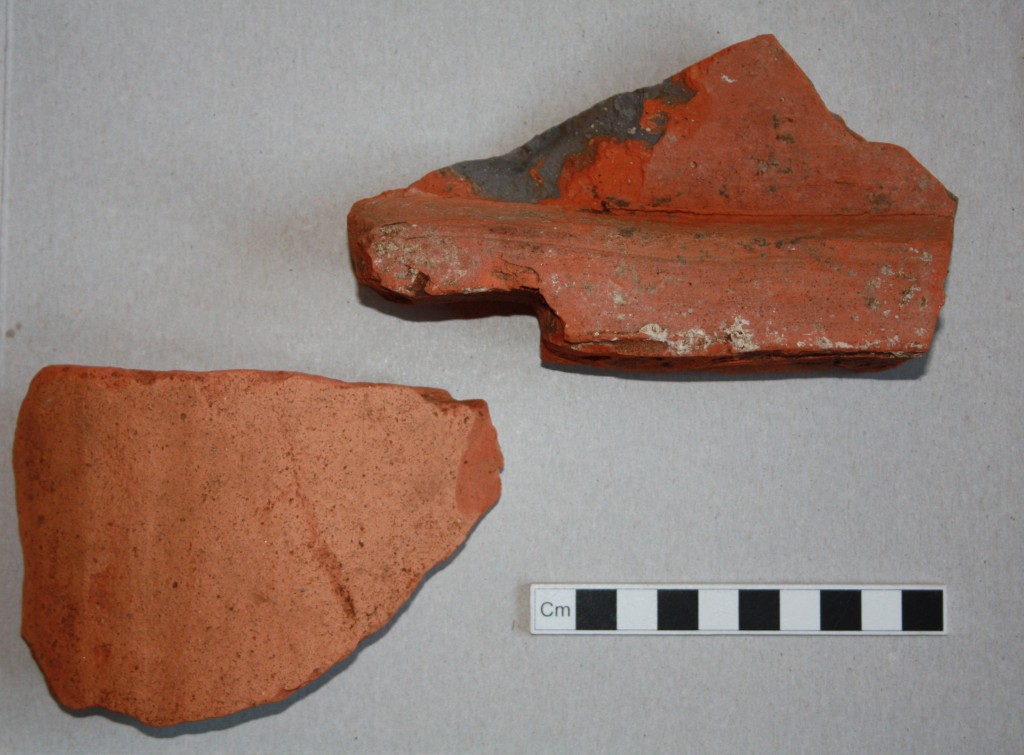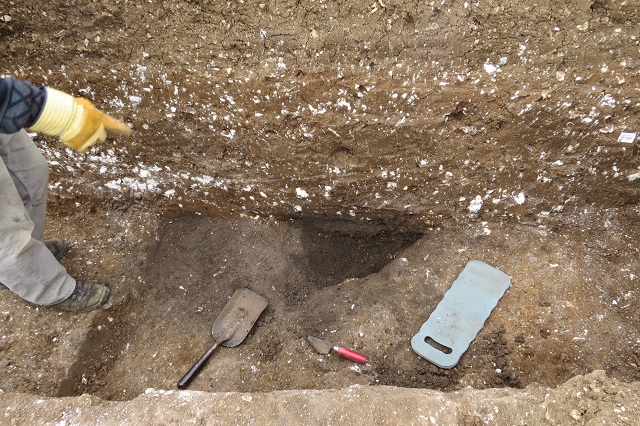We have continued the work at Trench B. We have exposed and excavated more of the ditch where Ashwini had recovered many oyster shells last week. We have moved on from labelling our huge feature as “the big geophysical anomaly”, or more informally, “the blob on the survey”. It is now formally labelled “Feature 2020”. Earlier in the week we found a large pocket of burnt remains in the centre of the feature about one metre below its surface. We collected a bulk sample of the material which will go for special analysis. We can already see that it contains many fragments of burnt animal bone. This should provide us with valuable information. We do not think that the activity this represents relates to the original function of the feature. We can now see that the feature has many layers within it which is good for learning about how it filled and ‘site formation processes’. We are now down to about 1.25m below the top of the feature and have stepped in our excavations. The layers we are now encountering look very promising and all the finds we have had from the feature are of Roman date. Feature 2020 has still to reveal its main secret: why it was created in the first place. At five metres in diameter we think it must have been something extraordinary, which is why we decided to tackle it as a priority.
From both our fieldwalking and excavations we have recovered hundreds of fragments of Roman ceramic building material. These show that the Roman building/s as the site were almost certainly roofed with tiles. Many Roman rural sites had buildings which were evidently thatched or had wooden shingles. To roof our Roman building with tiles would be expensive and would have been an instant sign to any observer approaching the site that here in the province of Roman Britain Classical architecture had been adopted by some. Here in the photos are some examples of roof tile and box flue tile for a heating system. There are so many fragments of the latter that many of the team believe Roman baths or a heating system had been installed. Typically we have encountered no complete or largely complete tiles. Archaeological remains are often broken fragments but nonetheless are usually more than sufficient for identification.

Two fragments from Roman roof tiles. The fragment on the right comes from the broad flat type (known as tegulae) which would have covered most of the roof area. This example shows traces of mortar for attachment of the arched tile type (known as imbrices) which sealed the joins between tegulae. Presumably our mortared example here had been used for roofing at our site.

Fragments of box flue tiles; the larger piece came from Feature 2020, and shows sooting over its interior surface indicating use. Here we show the outer surface.
The Dig Team



